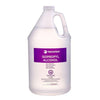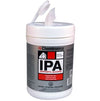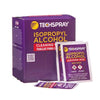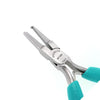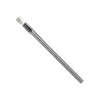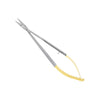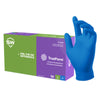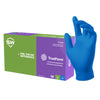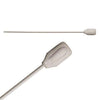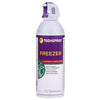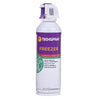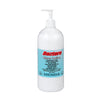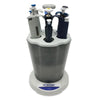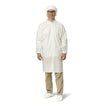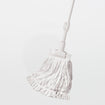- No products in the cart.
How to Wear a Non-Medical 3ply Fabric Mask Safely
Aug
21
2020
It's a frightening time for the whole world. The outbreak of the novel coronavirus has impacted the personal lives of people in several ways. States have implemented stay-at-home orders prohibiting people from going to parties, restaurants, and public places. Not only this, but individuals are also adopting new protocols and behaviors to protect themselves from the virulent disease, and covering their face is one of them.
According to the Center for Disease Control (CDC), some of the significant symptoms of COVID-19 include coughing, flu, fever, and shortness of breath. The virus spreads from person-to-person interaction or due to close contact with infected patients. If an infected person sneezes or coughs, their respiratory droplets can land near people's nose and mouth. When people inhale these droplets, they contract the virus.
Covering your face is one of the essential precautions you can take to reduce the chances of disease transmission during this COVID-19 epidemic. A fabric mask can help minimize the discharge of infectious particles when someone coughs, sneezes, or even speaks. Although face covering is not a substitute for washing hands, staying home, and physical distancing, it's helpful when you combine it with all these interventions.
chances of disease transmission during this COVID-19 epidemic. A fabric mask can help minimize the discharge of infectious particles when someone coughs, sneezes, or even speaks. Although face covering is not a substitute for washing hands, staying home, and physical distancing, it's helpful when you combine it with all these interventions.
The World Health Organization (WHO) recommends that people wear a nonmedical fabric mask when going out in public places, especially areas where keeping 6 feet of distance from others is not possible. That means if you're going grocery shopping, to a convenience store, or using public transit, it's essential to cover your face with a mask.
Here are eight key safety steps to follow when wearing a nonmedical fabric mask.
That's why you must make a conscious effort not to touch your face after putting on the mask. Please don't touch your eyes or rub the area around them while wearing the mask.
Avoid touching your mask directly. Remove it using its straps or ties behind your head and pull it carefully from your face. Make sure it does not rub your nose, eyes, and mouth. Do not forget to rewash your hands after you remove the mask.
For over 40 years, Lab Pro Inc. has been committed to providing non-medical fabric masks in California and worldwide. To learn more, visit the biggest Lab Supply showroom in California, or contact us online or at 888-452-2776.
According to the Center for Disease Control (CDC), some of the significant symptoms of COVID-19 include coughing, flu, fever, and shortness of breath. The virus spreads from person-to-person interaction or due to close contact with infected patients. If an infected person sneezes or coughs, their respiratory droplets can land near people's nose and mouth. When people inhale these droplets, they contract the virus.
Covering your face is one of the essential precautions you can take to reduce the

When You Should Wear Non-medical Mask
As mentioned above, nonmedical masks can act as a barrier. Masks prevent respiratory droplets from reaching and infecting others, and they also prevent droplets from falling on surfaces when someone sneezes or coughs.The World Health Organization (WHO) recommends that people wear a nonmedical fabric mask when going out in public places, especially areas where keeping 6 feet of distance from others is not possible. That means if you're going grocery shopping, to a convenience store, or using public transit, it's essential to cover your face with a mask.
How to Wear a Nonmedical Fabric Mask
To help people, the World Health Organization (WHO) has recently issued some tips. According to these tips, in the absence of a surgical mask, people can use nonmedical fabric masks to prevent COVID-19 spread.Here are eight key safety steps to follow when wearing a nonmedical fabric mask.
Wash Your Hands Before Touching the Mask
Washing your hands before you touch your fabric mask is essential to ensure that it is germ-free while you put on it. Touching your mask with unwashed hands may contaminate the fabric. For good hand hygiene, use an alcohol-based hand rub or soap and water to prevent infectious germs or pathogens from transmitting to your mask.Inspect Your Mask for Dirt or Damage
Carefully inspect your mask before wearing it. It will help you spot any damage or holes in the fabric. Know that if the fabric of your mask is worn out or torn, it will not provide you with the desired protection. Make sure your mask is clean and washed as a dirty mask can catch or spread the pathogens quickly.Wear Your Mask Properly
Your mask should fit neatly and comfortably on your face. That means the nonmedical fabric mask should not be too loose or tight against your face. If it's loose, it will not adjust to your face and may come off anytime. However, if it's tight, it can block air and make you feel suffocated. Therefore, you must choose a mask that fits your face's size and does not leave gaps on the sides.Cover Nose, Mouth, and Chin
Once you wear the mask, secure it with ear loops. As the virus transmits through the nose and mouth, your fabric mask must cover these areas. At the same time, it should allow you to breathe without restriction.Avoid Touching Your Mask
Not continually touching your mask is another vital tip many people often ignore when taking precautionary measures. Touching the mask frequently (after wearing it) increases the spread of germs and disrupts the position of the mask.That's why you must make a conscious effort not to touch your face after putting on the mask. Please don't touch your eyes or rub the area around them while wearing the mask.
Clean/Sanitize/ Wash Your Hands before Removing the Mask
Remember that your nonmedical fabric mask becomes contaminated/dirty on the outside if you touch it with dirty hands. That's why it's necessary to clean your hands before you remove the mask.Avoid touching your mask directly. Remove it using its straps or ties behind your head and pull it carefully from your face. Make sure it does not rub your nose, eyes, and mouth. Do not forget to rewash your hands after you remove the mask.
Store Mask Carefully
If you want to reuse your nonmedical fabric mask, store it in a clean/ washed plastic bag. It will help you keep the mask safe and unpolluted. Always use the straps or ties of the mask to pull it from the bag when you want to reuse it. Avoid touching the center area with dirty hands.Wash Your Fabric Mask
Wash your nonmedical fabric mask with premium quality items (soaps and detergent) using a hot water cycle. Dry the mask thoroughly. If you do not want to wash the mask, discard it right away.Bottom Line
Overall, taking the right precautions is the only way to keep this virus at bay. If you develop symptoms, do not wait and get yourself tested. Always follow the World Health Organization (WHO) and Center for Disease Control (CDC) guidelines.For over 40 years, Lab Pro Inc. has been committed to providing non-medical fabric masks in California and worldwide. To learn more, visit the biggest Lab Supply showroom in California, or contact us online or at 888-452-2776.







